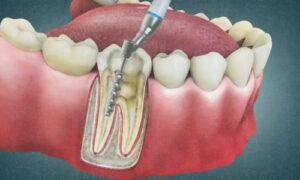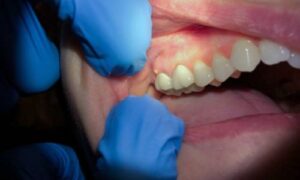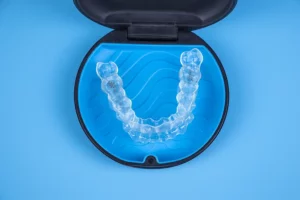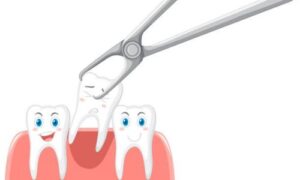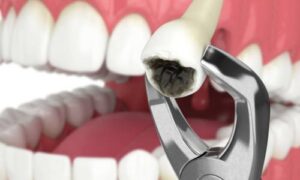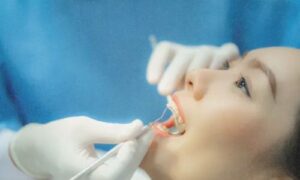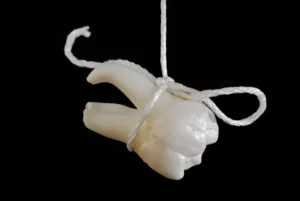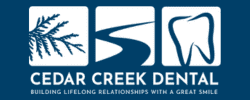Introduction: Pain-Free Dentistry Tips
Dental anxiety is a common concern that often stems from fear of pain associated with dental procedures. However, advancements in dentistry have led to innovative techniques that prioritize pain-free patient experiences. In this article, we will explore the realm of pain-free dentistry and provide tips on how dental professionals adopt innovative approaches to ensure a comfortable and stress-free experience.
The Evolution of Pain-Free Dentistry Tips: A Two-Step Approach
1. Anxiety Management Techniques
Dental anxiety has long been a barrier to comfortable dental experiences, often amplifying the perceived pain during procedures. Recognizing this, modern dental practices have evolved to incorporate innovative anxiety management techniques. These strategies create a serene and relaxed atmosphere, ensuring patients feel at ease throughout their dental visits. Some key methods include:
a. Mindfulness
Encouraging patients to practice mindfulness techniques, such as focused breathing and being present at the moment, helps alleviate stress and anxiety associated with dental procedures.
b. Deep Breathing Exercises
Deep breathing exercises serve as a practical tool to calm the nervous system. Dental professionals guide patients through controlled breathing, promoting relaxation and reducing anxiety.
c. Virtual Reality Distractions
Integrating virtual reality (VR) as a distraction technique has proven effective in diverting patients’ attention during dental procedures. VR experiences provide an immersive escape, easing anxiety and making the dental environment more tolerable.
2. Topical Anesthetics
Acknowledging that the fear of injections contributes significantly to the perceived pain, dental practices have embraced a simple yet impactful solution—topical anesthetics. This technique involves applying numbing agents to the surface of the gums before administering injections. The benefits include:
a. Minimized discomfort
Topical anesthetics effectively numb the gum tissue, significantly reducing the sensation of the needle during injections. This minimizes discomfort and addresses one of the primary sources of anxiety for many patients.
b. Virtually Painless Injections
By numbing the surface area where injections occur, patients often experience virtually painless injections. This enhances the overall comfort of the dental visit and fosters a positive perception of dental procedures.
Innovative Techniques for Pain-Free Procedures
1. Laser Dentistry
Laser technology has revolutionized various dental procedures. Lasers can be used for cavity preparation, gum contouring, and soft tissue treatments. The use of lasers in dentistry offers several advantages over traditional methods. Laser dentistry is often associated with less bleeding, reduced need for anesthesia, and faster healing times. Additionally, lasers can precisely target specific areas, resulting in more conservative treatment approaches and preserving healthy tooth structure.
2. Air Abrasion
Air abrasion is a drill-free technique that uses a stream of tiny abrasive particles to remove decay. This technique is less invasive and often eliminates the need for anesthesia. It also allows for more precise decay removal, preserving more of the healthy tooth structure. Air abrasion is particularly beneficial for treating small cavities and children afraid of traditional dental drills.
3. Computerized Anesthesia Delivery Systems
Computerized anesthesia delivery systems, such as The Wand, use a controlled, slow injection technique that reduces the sensation of the injection. This technique is especially helpful for patients who have a fear of needles or experience anxiety during dental procedures. Additionally, computerized anesthesia delivery systems allow for more accurate and targeted numbing, reducing the risk of accidentally numbing surrounding tissues.
4. Inhalation Sedation (Laughing Gas)
Nitrous oxide, commonly known as laughing gas, is a safe and effective sedative that can help patients relax during dental procedures. It is administered through a mask that fits over the nose, allowing the patient to breathe in a mixture of nitrous oxide and oxygen. Laughing gas induces a feeling of euphoria and relaxation, helping patients feel more at ease during their dental treatment. Additionally, it wears off quickly after the procedure, allowing patients to resume normal activities without lingering effects.
5. Digital Impressions
Traditional dental impressions involving trays filled with gooey material can be uncomfortable for patients. However, with the advancement of technology, digital impressions have become a popular alternative. Using a handheld scanner, the dentist can quickly and painlessly capture a detailed 3D image of the patient’s teeth and gums. This eliminates the discomfort of traditional impressions and provides more accurate results for better-fitting dental restorations.
Tips for a Pain-Free Dentistry Experience
1. Communicate with Your Dentist
Open communication with your dentist is crucial. Discuss any fears or concerns, and inquire about pain-free techniques or sedation options that suit your situation. By discussing your concerns and fears with your dentist, they can tailor the dental experience to meet your needs and ensure a pain-free visit. Additionally, dentists may offer sedation options such as nitrous oxide or oral sedatives to help you relax during the procedure.
2. Regular Dental Check-ups
Regular dental check-ups help identify issues early, reducing the need for extensive treatments. Early intervention can prevent pain and discomfort associated with more advanced dental problems. Regular dental check-ups also allow your dentist to monitor your oral health and provide preventive care, such as cleanings and fluoride treatments, which can help maintain the health of your teeth and gums. Taking proactive steps towards maintaining good oral hygiene can ultimately save you time, money, and potential pain in the long run.
3. Explore Sedation Options
If you experience significant anxiety about dental procedures, discuss sedation options with your dentist. Sedation can help you relax and make the experience more comfortable. Different levels of sedation are available, ranging from mild sedation to deep sedation or general anesthesia. Your dentist will evaluate your anxiety level and medical history to determine the most appropriate option for you. It is important to communicate your concerns and fears with your dentist so that they can provide the best possible care for you.
4. Choose a Dentist Experienced in Pain-Free Tips
Selecting a dentist experienced in pain-free techniques ensures you receive the latest innovative and comfortable dental care. Research dentists in your area who prioritize pain-free dentistry. Look for dentists who offer services such as laser dentistry, which can minimize discomfort during procedures. Additionally, consider reading patient reviews or asking for recommendations from friends or family members who have had positive experiences with pain-free dentistry.
The global Dental Drill market size was valued at USD 1494.21 Million in 2023 and will reach USD 2205.93 Million in 2030, with a CAGR of 6.71% during 2023-2030. Source.
Conclusion: Pain-Free Dentistry Tips
In conclusion, pain-free dentistry is not just a concept; it’s a reality shaped by innovative techniques and technologies. From anxiety management strategies to laser dentistry and advanced sedation options, dental professionals are committed to providing a comfortable experience for patients. If you’ve been avoiding dental visits due to fear of pain, explore these pain-free dentistry tips and discuss your concerns with your dentist. A pain-free smile is within reach thanks to the continuous evolution of techniques designed to prioritize your comfort and well-being.
FAQs about Pain-Free Dentistry Tips
Q1: What is pain-free dentistry?
A1: Pain-free dentistry uses innovative techniques, technologies, and strategies to minimize or eliminate discomfort and anxiety associated with dental procedures. The goal is to create a more comfortable and stress-free experience for patients.
Q2: How do anxiety management techniques work in pain-free dentistry?
A2: Anxiety management techniques, such as Mindfulness and virtual reality distractions, help patients relax and alleviate stress during dental procedures. By creating a calm environment, these techniques contribute to a pain-free and positive dental experience.
Q3: What are topical anesthetics, and how do they contribute to pain-free dentistry?
A3: Topical anesthetics are numbing agents applied to the surface of the gums before injections. They help reduce the sensation of the needle, making injections virtually painless and contributing to a pain-free dental experience.
Q4: How does laser dentistry contribute to pain-free procedures?
A4: Laser dentistry uses laser technology for various dental procedures, providing a minimally invasive and often pain-free alternative to traditional methods. Lasers can be used for cavity preparation, gum contouring, and soft tissue treatments.
Q5: What is air abrasion, and how does it make dental procedures pain-free?
A5: Air abrasion is a drill-free technique that uses a stream of tiny abrasive particles to remove decay. This method is gentle, generates less noise than a traditional dental drill, and contributes to a more comfortable and pain-free dental experience.




